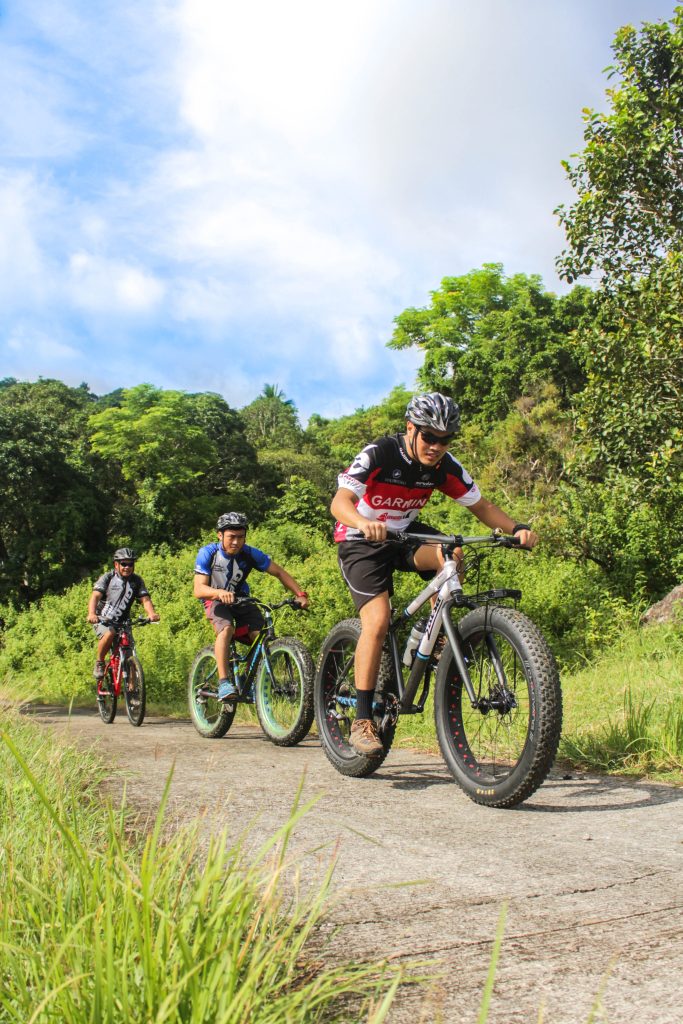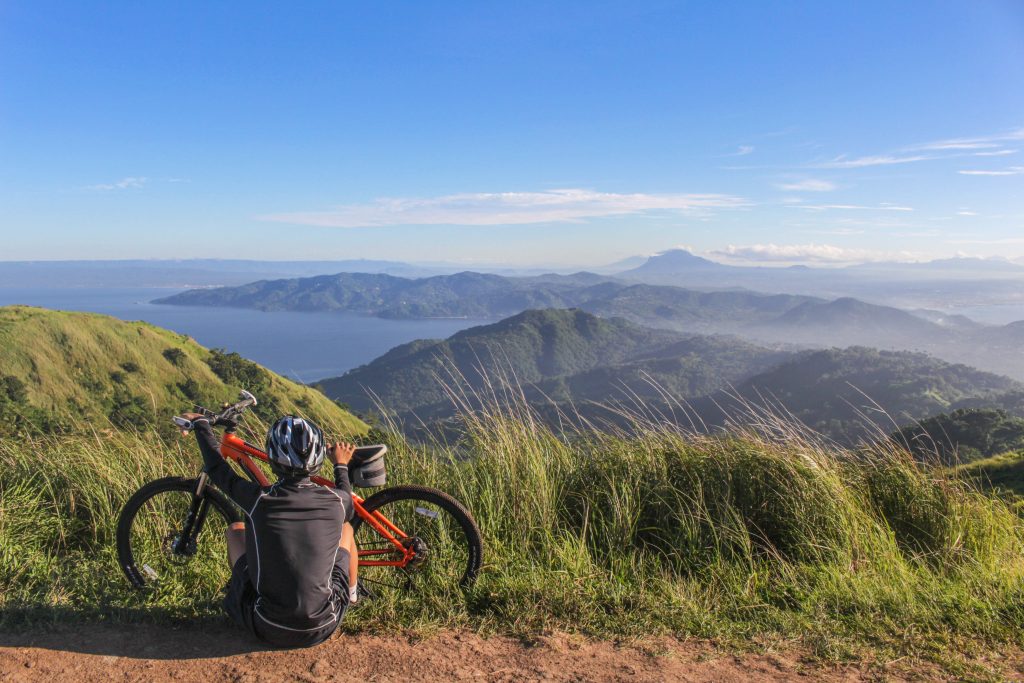Since its inception, mountain biking has undergone substantial change. The classic road cycle served as the basis for the first mountain bikes, which were created in the late 1970s and early 1980s. These early bicycles were primarily used for off-road touring and exploration and had heavy steel frames and huge tires.
The next few decades saw the development of lighter, more effective mountain bikes thanks to developments in technology and design. In order to increase the bike’s ability to tackle tough terrain, suspension systems were added and steel was replaced with aluminum and carbon fiber for the frame.
Downhill mountain biking, a sport where riders compete down steep, tricky routes on specialist bikes, first appeared in the 1990s. Due to this, even more specialized bikes were created, such the freeride bike, which is made for executing feats and tricks.
With the advent of enduro and gravity bikes, the trend in recent years has been toward longer travel and more aggressive bikes. Additionally, electric mountain bikes are becoming more and more well-liked since they enable users to easily navigate steep and complex terrain.
Focusing on climbing and mountaineering is the newest trend in mountain biking. This includes training and methods for climbing steep and technical terrain, as well as the use of light, high-performance bicycles and equipment. The development of new technology and improvements in mountain biking clothing and equipment, including better suspension systems, lightweight materials, and more, is a result of the rising popularity of climbing and mountaineering.
Early Days of Mountain Biking
Design of traditional road bikes
Traditional road bike design concepts were used to create the first mountain bikes. They had a handlebar set that stretched out in front of the rider and a diamond-shaped frame with a top tube that slanted down toward the seat post. The use of wider tires, which improved traction on rocky and uneven terrain, was the main distinction between early mountain bikes and conventional road bikes.
Use of heavy steel frames and wide tires
The weighty steel frames and large tires of the early mountain bikes made them ideal for off-road touring and exploration. The steel frames were tough and could survive the challenges of off-road riding, but they were also heavy, making them challenging to control on challenging terrain. The bike’s wide tires added weight and increased rolling resistance, but they also gave it outstanding traction on rocky and uneven terrain.

Advancements in Technology and Design
Introduction of lighter materials
Mountain bikes that are lighter and more efficient have been created as mountain biking has grown in popularity. Steel was replaced with frame materials including aluminum and carbon fiber, considerably reducing the bike’s weight. This improved their maneuverability on rough, rocky terrain and made them simpler to ride uphill.
Development of suspension systems
Another significant development in mountain bike technology was the introduction of suspension systems. The impact of bumps and difficult terrain is absorbed by suspension systems, making the ride more comfortable for the user and enhancing the bike’s handling. The front suspension fork and the rear suspension are the two most typical types of suspension systems used on mountain bikes.

Emergence of Specialized Bikes
Downhill mountain biking
Downhill mountain biking, a sport where riders compete down steep, tricky routes on specialist bikes, first appeared in the 1990s. Due to this, even more specialized bikes were created, such as the downhill bike, which was created especially for racing on difficult, steep terrain. Long travel suspension in downhill bikes enables them to withstand the force of significant drops and jumps. They are also stable at high speeds due to their loose head angle.
Freeride biking
The freeride bike was another specialized bike that appeared in the 1990s. Freeride bikes are made to be used for tricks and stunts. They are easier to maneuver and better suited for tricks than downhill bikes because they have a more relaxed geometry. Additionally, the suspension system on freeride bikes is more aggressive than that on other kinds of mountain bikes.
Recent Trends in Mountain Biking
Longer travel and more aggressive bikes
Longer travel and more aggressive bikes, such enduro and gravity bikes, have become popular in recent years. These bikes are more aggressively shaped than other mountain bike varieties and have longer suspension travel. They become more stable and resilient as a result, handling bigger drops and jumps.
Electric mountain biking
In recent years, electric mountain bikes have grown in popularity. A tiny electric motor is built into these bikes to help the user pedal. This increases the amount of distance that can be traveled on a single charge and makes it easier for riders to navigate steep and challenging terrain. Electric mountain bikes are becoming more popular for a wide range of riding activities, including cross-country and downhill.
Climbing and mountaineering
The emphasis on mountaineering and climbing is another recent development in mountain riding. This includes training and methods for climbing steep and challenging terrain, as well as the usage of light, high-performance bicycles and equipment. The introduction of new technologies and improvements in mountain biking gear and equipment is enabling riders to better their climbing abilities, which is something they are trying to achieve.
Innovations in Mountain Biking Gear and Equipment
Advancements in suspension systems
The development of suspension systems is one of the most important developments in mountain biking clothing and equipment. With the introduction of new materials and technologies, suspension systems have advanced. Due to this, suspension systems that are lightweight and high-performing that can offer superior control and traction on unpaved surfaces have been developed.
Lightweight materials
The adoption of lightweight materials is a significant innovation in mountain bike gear and equipment. To make stronger and lighter frames, wheels, and components, carbon fiber and advanced composites are being used. As a result, bikes that are easier to control and ride uphill have been created.
Techniques for steep and technical terrain
Finally, motorcyclists are continually searching for fresh methods and approaches for navigating tough, steep terrain. This has prompted the creation of fresh coaching services, tutorials, and training programs that emphasize teaching riders how to sharpen their abilities and conquer difficult terrain with assurance.
In conclusion, mountain biking has come a long way since its early days. Advances in technology and design have led to the development of more efficient and specialized mountain bikes, as well as new trends and innovations in the sport. From the early days of heavy steel frames and wide tires, to the latest trends in electric mountain biking and climbing and mountaineering, the evolution of mountain biking has been exciting to watch. With new technologies and innovations constantly being developed, the future of mountain biking looks bright.
Also Combining mountain biking and hiking can be a fantastic way to appreciate the outdoors and discover new landscapes. Hiking to a remote spot on a mountain bike, then using the bike to explore the region, is one approach to mix mountain biking and hiking. This makes it possible to travel farther more quickly while still taking in the views and the natural environs. Participating in a “bikepacking” trip, where participants bring all necessary camping gear and spend several days biking and camping in remote locations, is another way to combine the two pursuits. This kind of excursion can be a wonderful opportunity to get away from the daily grind and gives a distinctive approach to see the nature.
The practice of hike-a-bike is an additional technique to mix mountain riding and hiking. In steep and complicated terrain that is too difficult to ride, a rider uses this method to push or shoulder the bike while walking. It also offers a different way to experience the terrain and a more difficult workout.
Given that not all hiking trails permit mountain biking, it is crucial to keep in mind that while combining hiking with mountain biking, the rider should be cognizant of trail etiquette and the laws of the park or trail they are visiting. Having the appropriate tools, such as a helmet, water, and a repair kit, as well as the information and abilities required to negotiate the terrain, is also crucial.



